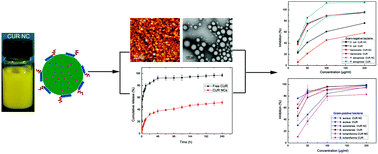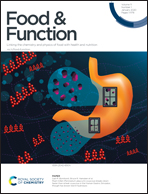Enhanced curcumin solubility and antibacterial activity by encapsulation in PLGA oily core nanocapsules
Abstract
Infections caused by bacteria represent an emerging public health threat due to the development of antibiotic resistance in bacteria. Curcumin (CUR), a naturally derived substance, is found to be effective against several bacteria. However, its use is limited by its low water solubility and rapid degradation profile. Polymeric nanocapsules (NCs) represent an interesting drug delivery system with high incorporation rates due to their liquid core. The present study aimed to develop poly-(lactic-co-glycolic acid) (PLGA) NCs for the delivery of CUR for enhancing its solubility and antibacterial activity. The particle size, polydispersity index (PDI), zeta potential and drug entrapment efficiency of CUR NCs with optimal formulation were 158 nm, 0.156, −29.1 mV and 92.64%, respectively. The water solubility of CUR in NCs increased about 1500 fold compared to that of free CUR. TEM and AFM images proved the core–shell structure of PLGA NCs with narrow size distributions. The in vitro release profile of CUR from PLGA NCs showed a burst release in the initial 24 h followed by a sustained release of the interior CUR over 10 days. In vitro antibacterial experiments demonstrate that the minimum inhibitory concentrations (MICs) of CUR NCs were lower than those of free CUR for all different bacterial strains, especially for Gram-negative bacteria. CUR NCs exhibited broad-spectrum antibacterial effects compared with free CUR. These data suggest that these CUR-loaded PLGA NCs may provide a promising strategy as novel antibacterial agents.



 Please wait while we load your content...
Please wait while we load your content...